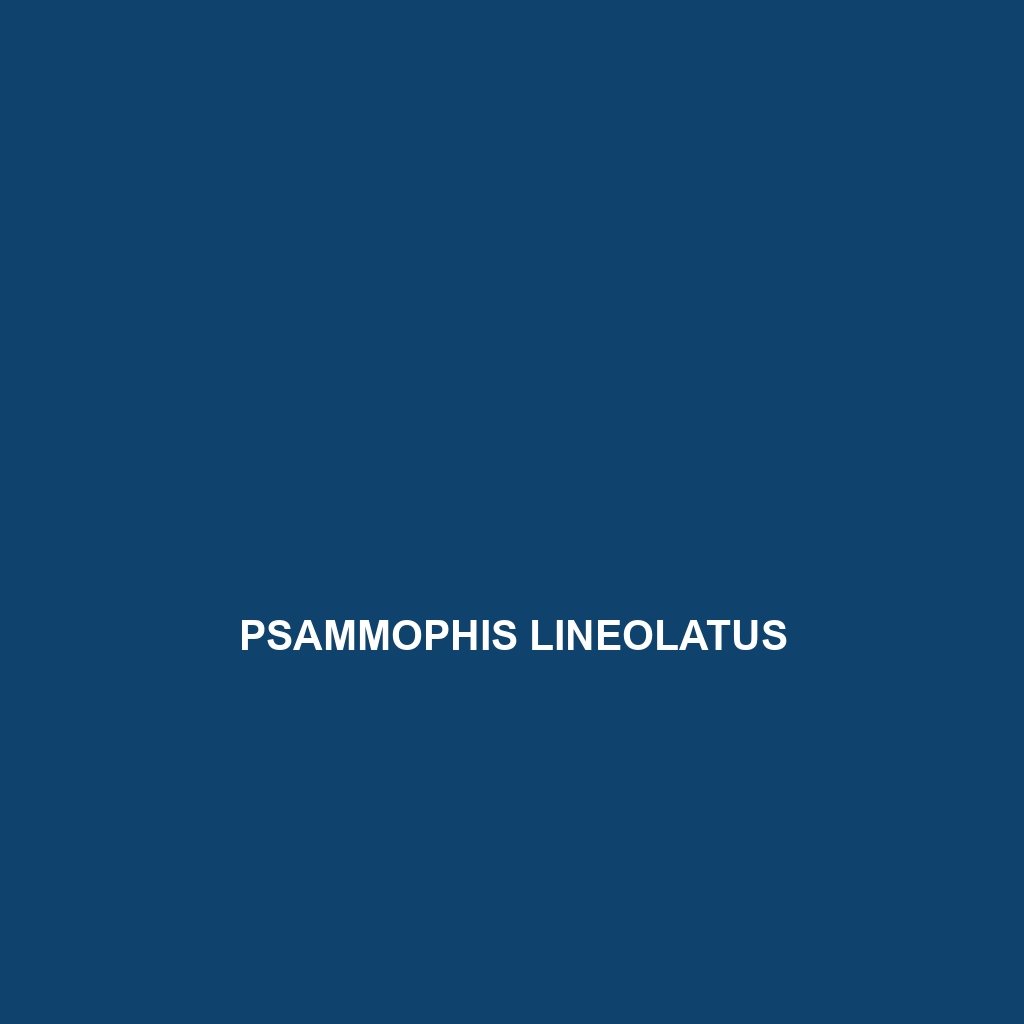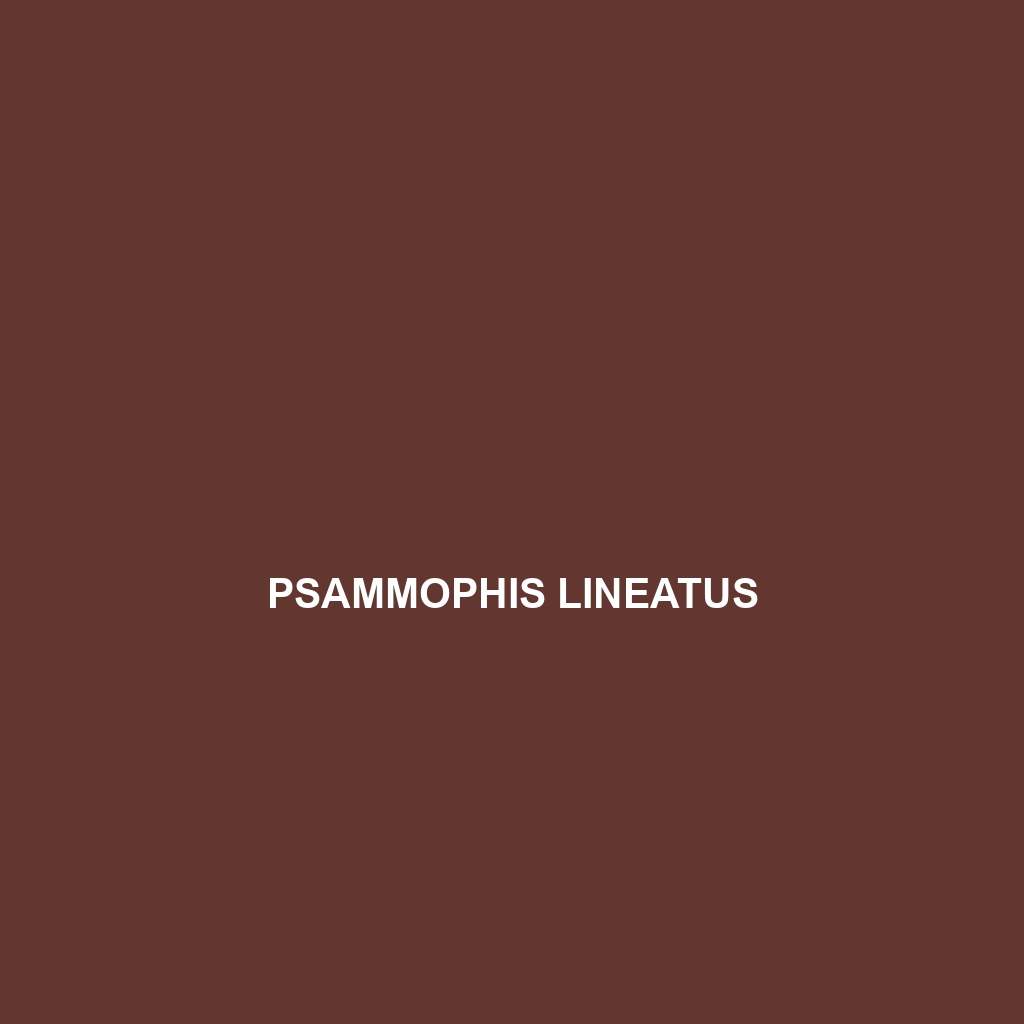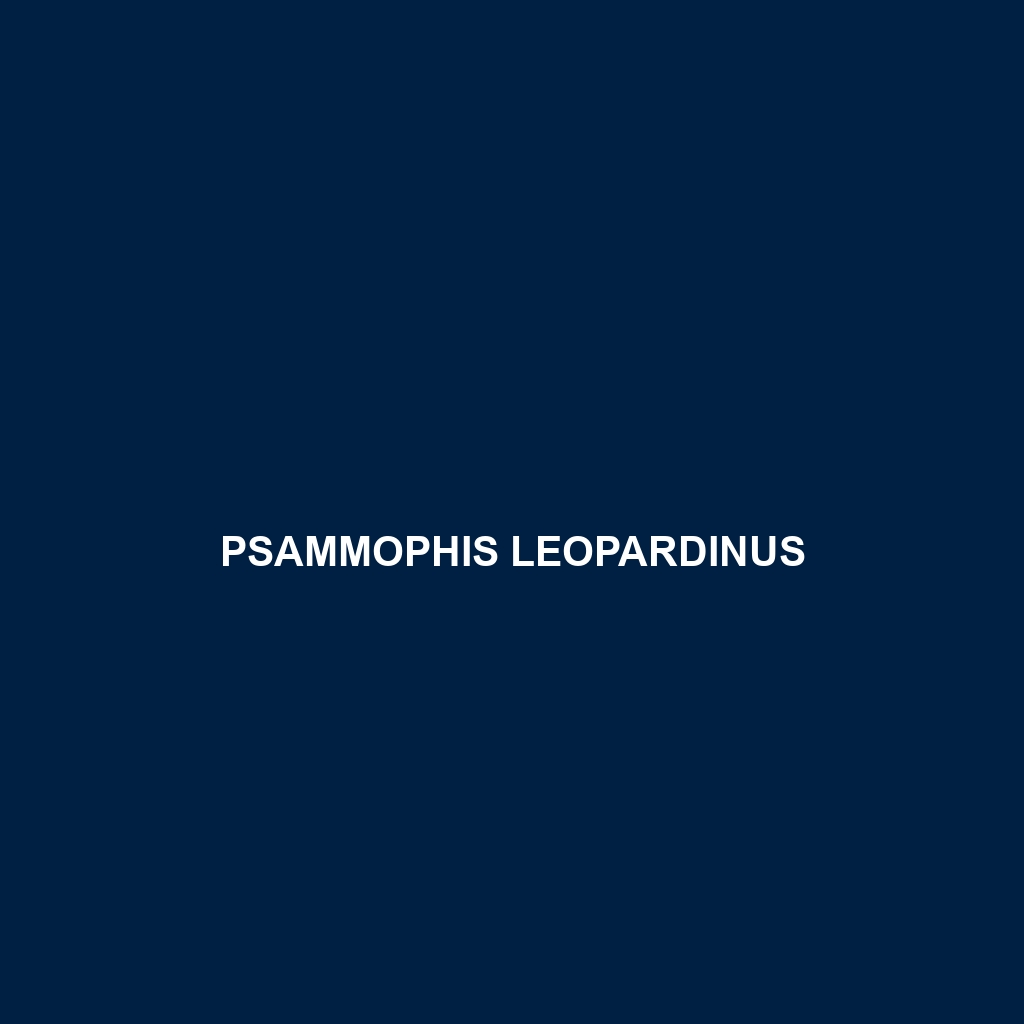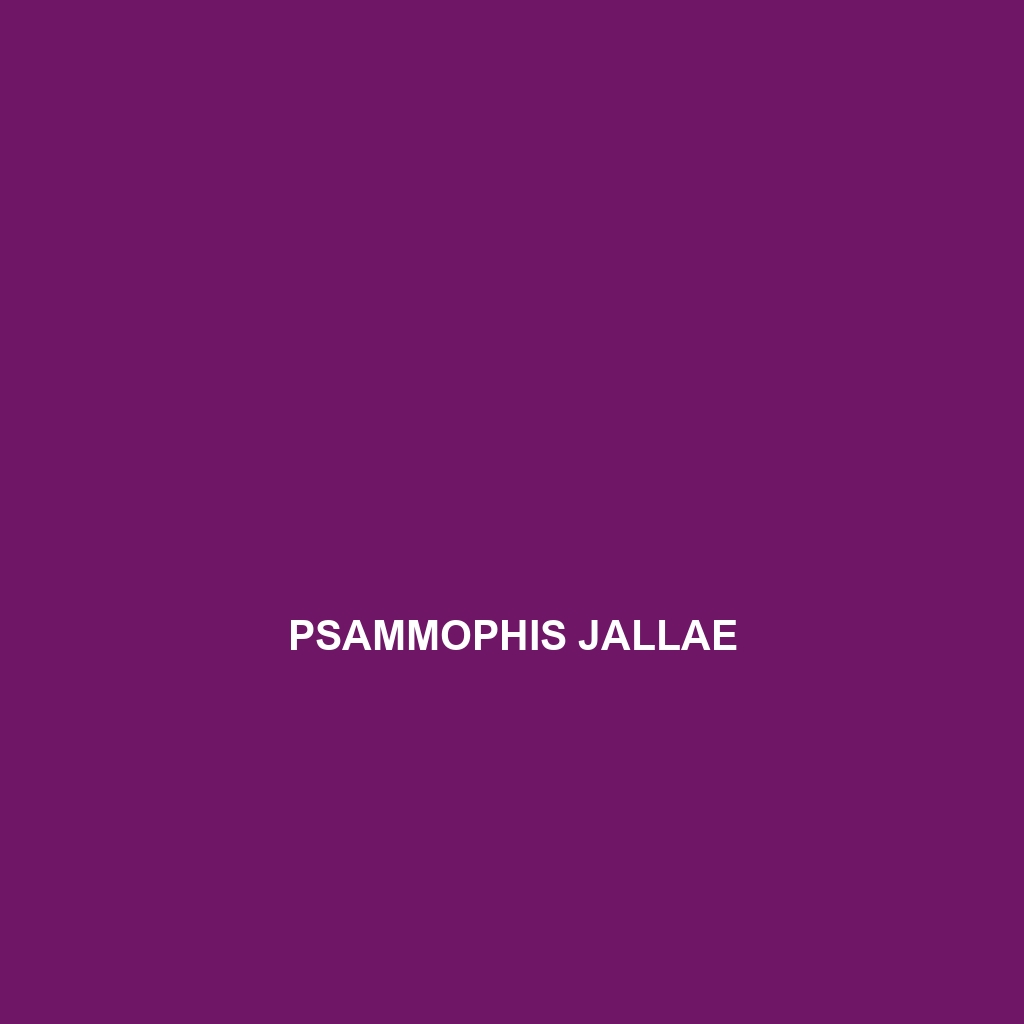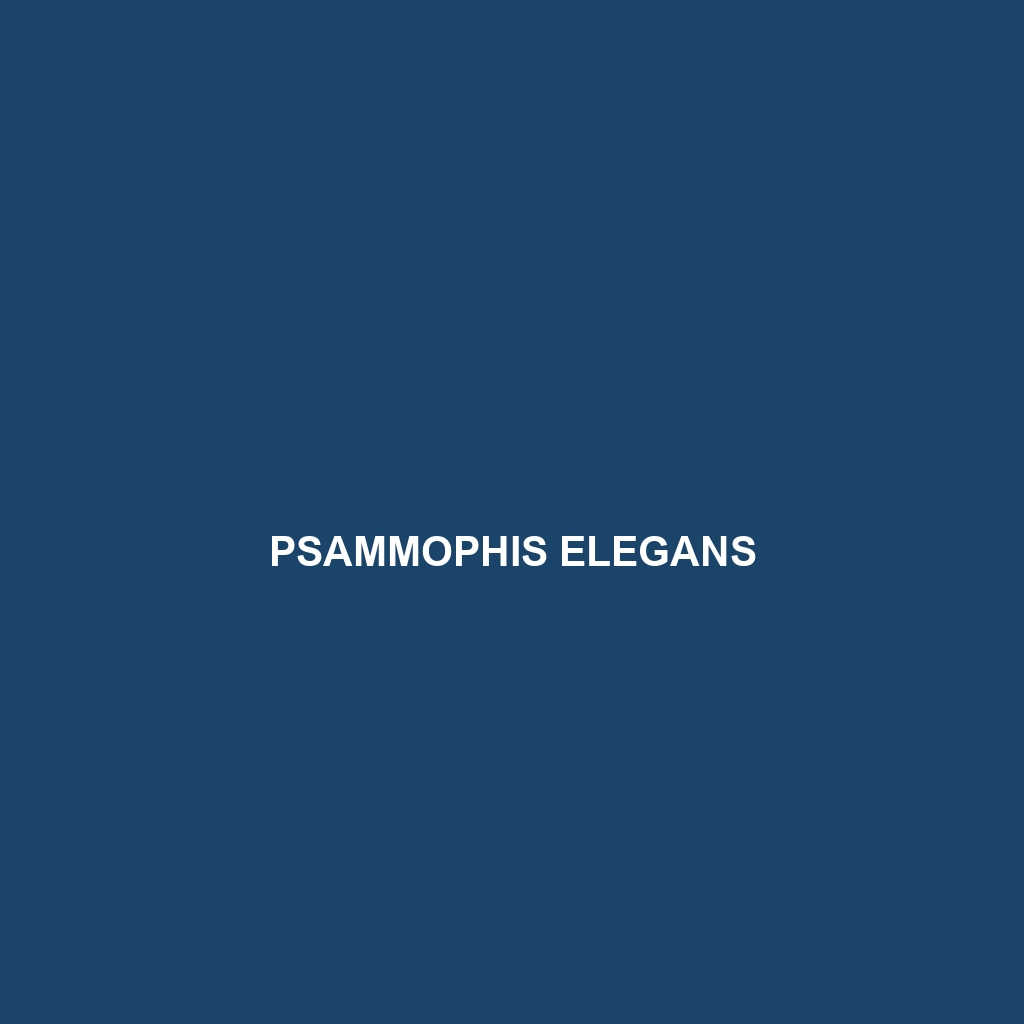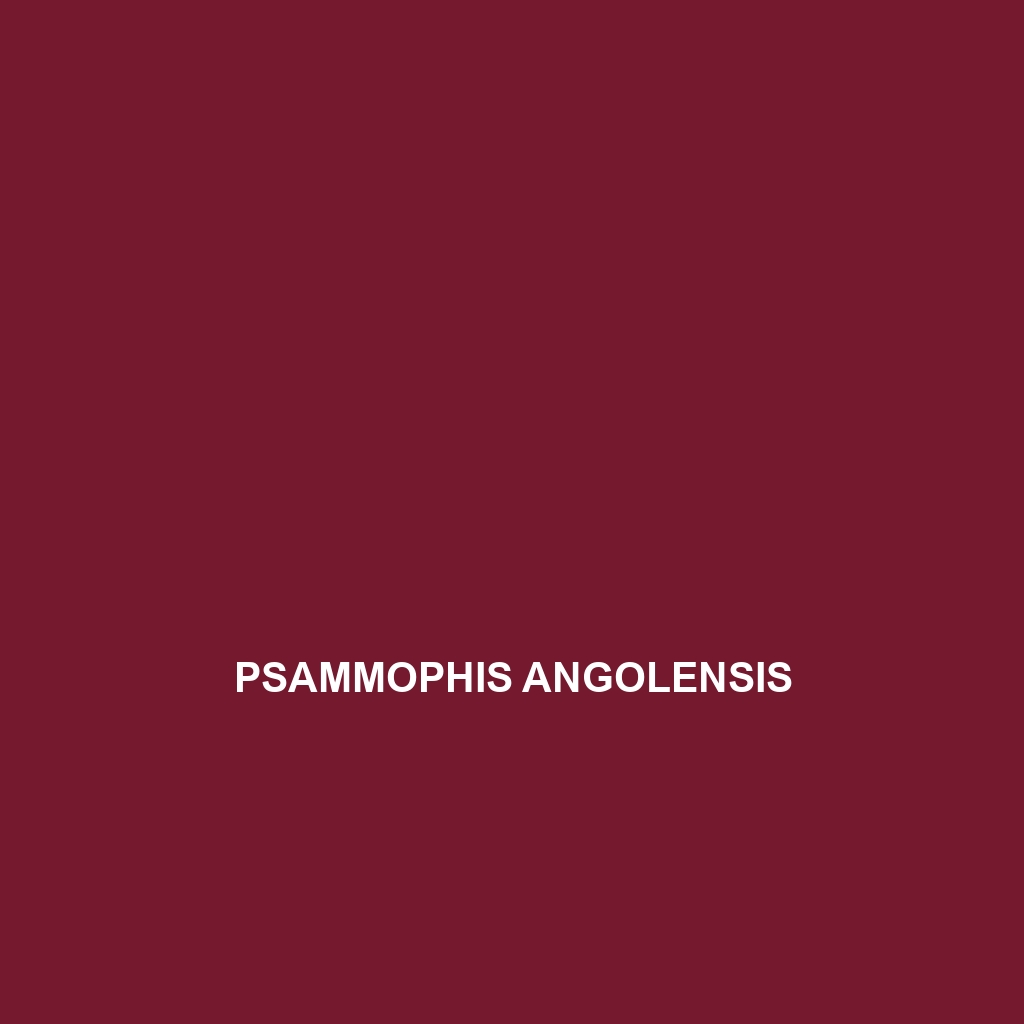<p>Discover the <b>Striped Sand Snake (Psammophis lineolatus)</b>, a swift and agile predator native to southern and eastern Africa, known for its distinctive light brown or pale yellow coloration with dark vertical stripes. Thriving in warm, arid habitats, this snake plays a crucial role in maintaining ecological balance by controlling local prey populations.</p>
Tag: African snakes
Psammophis lineatus
<p><b>Psammophis lineatus</b>, commonly known as the lined sand snake, is a slender and agile predator found in arid savannas and scrublands across Africa. With its striking coloration and remarkable speed, this carnivorous snake plays a vital role in controlling small vertebrate populations while exhibiting fascinating behaviors, including complex courtship rituals during mating season.</p>
Psammophis leopardinus
<b>Psammophis leopardinus</b>, or the leopard sand snake, is a slender, nocturnal snake found in Africa's savannas and grasslands, characterized by a distinct pattern of dark spots on a lighter background, measuring between 1.5 to 2.5 meters. This carnivorous species plays an essential role in its ecosystem by regulating small vertebrate populations and exhibits unique behaviors, including burrowing for protection and the ability to "play dead" when threatened.
Psammophis jallae
<p><b>Psammophis jallae</b> is a medium-sized, semi-arboreal snake native to tropical and subtropical Africa, characterized by its slender body, striking pale cream to sandy yellow coloration, and bold black or dark brown stripes. Thriving in warm climates, it plays a crucial role in its ecosystem by regulating prey populations and exhibiting fascinating behaviors, including unique courtship displays and opportunistic feeding on small vertebrates and invertebrates.</p>
Psammophis elegans
<p><b>Psammophis elegans</b>, commonly known as the elegant sand snake, is a medium-sized, agile snake native to various habitats across Africa. Renowned for its striking coloration and diurnal behavior, it plays a crucial role in controlling pest populations while exhibiting fascinating courtship rituals during its breeding season.</p>
Psammophis crucifer
<strong>Psammophis crucifer</strong>, commonly known as the <strong>Crossed Sand Snake</strong>, is a slender, diurnal snake typically measuring 70-90 cm long, adorned with pale yellow to beige scales and distinct dark cross-like bands. Thriving in a variety of habitats across eastern and southern Africa, it preys on insects and small vertebrates while playing a crucial role in maintaining ecological balance.
Psammophis brevirostris
<p><b>Psammophis brevirostris</b>, commonly known as the short-snouted sand snake, is a slender, agile snake found in the arid savannas and dry grasslands of eastern Africa, particularly in Tanzania, Kenya, and Sudan. Known for its striking yellowish and light brown coloration, this diurnal carnivore preys on small rodents, lizards, and insects, showcasing impressive burrowing abilities and speed that aid in its survival.</p>
Psammophis biseriatus
The <b>Banded Sand Snake</b> (<i>Psammophis biseriatus</i>) is a striking African serpent known for its beautiful alternating dark and light bands, reaching lengths of 50 to 100 centimeters. Thriving in savannas and dry grasslands, it plays a vital role in controlling rodent and lizard populations while exhibiting fascinating behaviors like diurnal hunting and unique courtship displays.
Psammophis angolensis
<p><b>Psammophis angolensis</b>, or the Angolan sand snake, is a slender, diurnal predator native to sub-Saharan Africa, known for its distinctive coloration and adaptability to various sandy habitats. Typically reaching lengths of 1.2 to 1.5 meters, it primarily feeds on small vertebrates and plays a vital role in maintaining ecological balance in its environment.</p>
Prosymna semifasciata
<strong>Prosymna semifasciata</strong>, also known as the striped burrowing snake, is a slender, nocturnal insectivore found in the rainforests and savannas of eastern Africa. With distinctive longitudinal stripes and a burrowing lifestyle, this species plays a vital role in its ecosystem by regulating insect populations and enhancing soil health.
